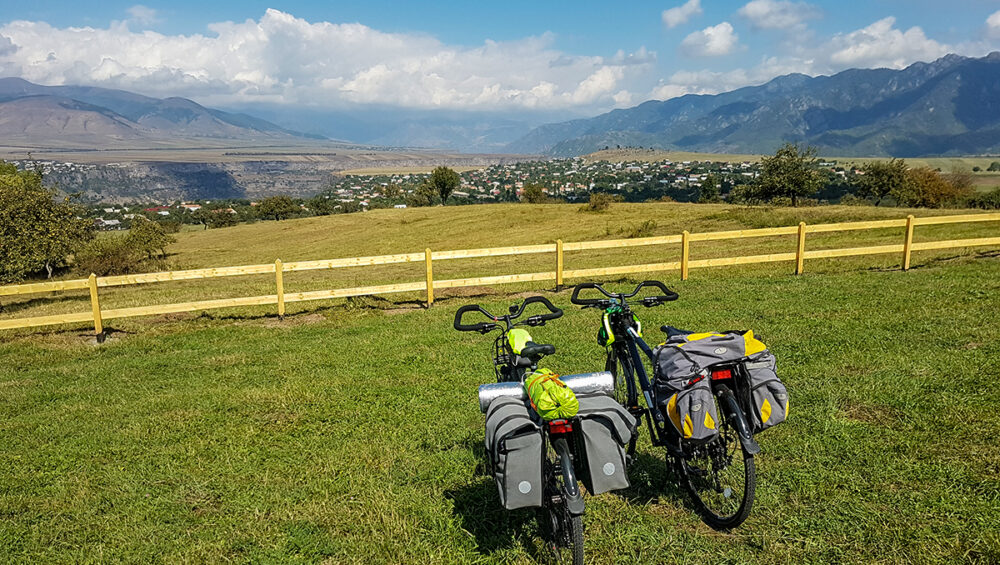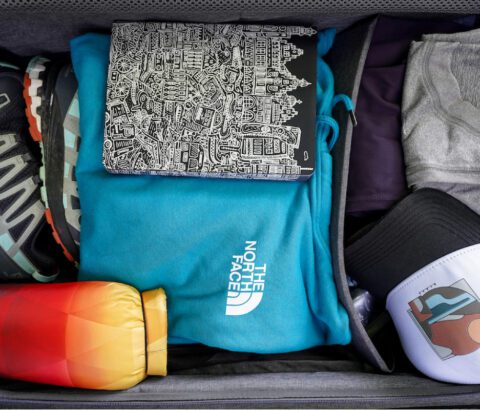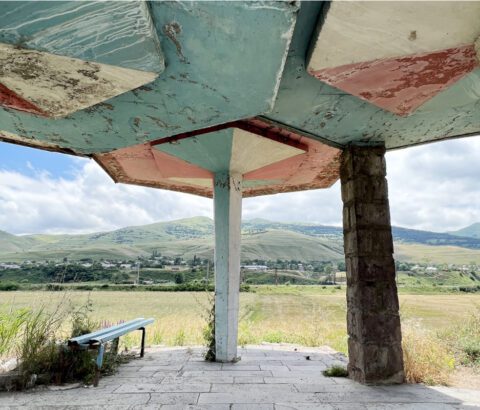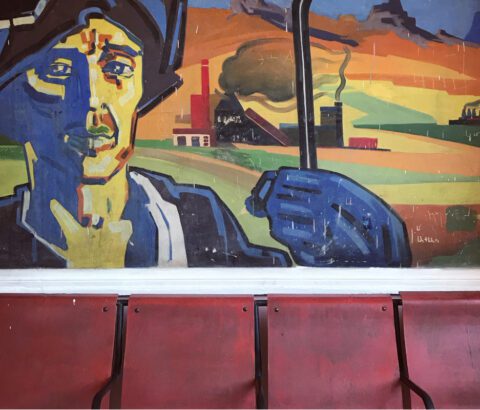If you ever decide to experience Armenia in a very unique way, make sure to get on a bicycle and explore at least some part of the country on two wheels. My husband and I traveled around Armenia a lot: we hitchhiked, we hiked and trekked, we traveled on cars and buses. But cycling around Armenia was an adventure we were yet to try. So when we got ourselves new bikes, we decided to cycle to one of Armenia’s treasure troves, the canyon of Debed. But the road to the canyon would take us at least two days. Instead, we decided to take a 3-hour ride on an old Soviet-era train from Yerevan to Gyumri (bicycles get to travel free of charge), and start cycling in the direction of Vanadzor from there.
It was already noon when we cycled our way out of Gyumri, pedaling towards the Jajur mountain pass, enjoying the warmth of the September sun and the tranquility of the Shirak plains rimmed by mountain ranges, with old Soviet neoclassical buildings popping up here and there along the way. Cycling on a straight road was a mere pleasure, but things changed after the village of Jajur. The road here starts climbing up, forcing you to abandon any thoughts and concentrate on your breath only. From the maps, we knew that at one point, we’re going to cross over the peak, but until then, we were on this Armenian roller coaster, cycling up and down roads, until finally descending to the city of Vanadzor, the capital of the Lori province.
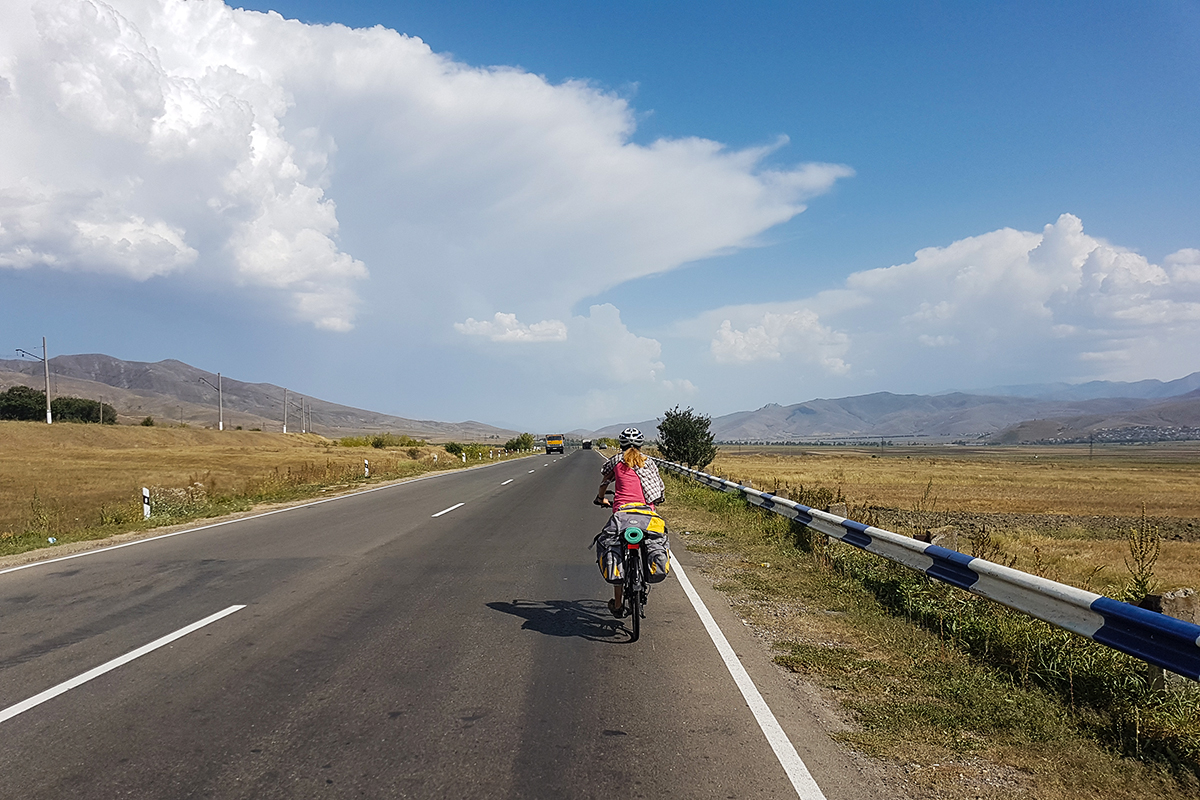

The active renovation of the roads and the rapidly developing infrastructures make sure travelers always get water or food along the way. We only carried snacks with us for the little breaks at the scenic spots. There was a newly opened tourist center between the cities of Spitak and Vanadzor we wanted to check out, which we did, and had a launch there before continuing our journey. Our destination on that day was the small village of Pambak.
Just past the city of Vanadzor we came across a group of cyclists, members of a local cycling community, who joined us and we traveled a few kilometers together. In Pambak, we were going to stay at the House of Fairy Tale. We were lucky to meet the founder of this unique guest house and gastro yard, artist and musicologist Hasmik Baghramyan who kindly introduced her idea and the activities of the House of Fairy Tale to us. And after enjoying a delicious homemade dinner, we retreated to our beds to rest.
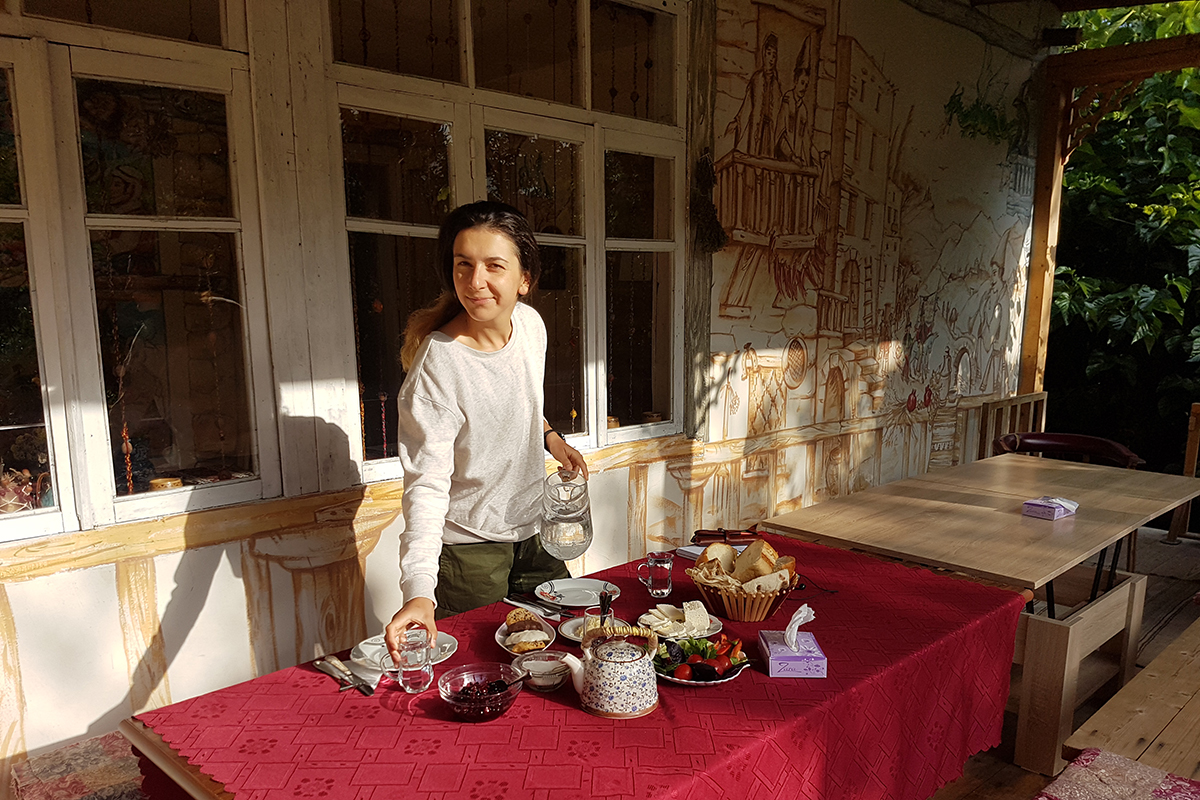

The road after Pambak goes downhill, but while we were enjoying this effortless part of our cycling trip, both of us had one thought that kept popping up in our minds every 5 minutes. On the way back, we will have to pedal this road up. “It’s fine,” we agreed. “The road to the village of Dsegh will be a good training.” It’s a 7-km steep climb from the bottom of the canyon to the upper plateau, but the stunning panoramic views that open up from there are absolutely worth the effort. We took a break at the recently launched Visitor Center by COAF on the junction of M6 and H22 roads, and began to slowly ascend the canyon slope. We spent the night camping at the WOW Glamping campzone just above the village of Dsegh, a great place for those who prefer camping in comfort (the word “glamping” is a combination of glamour and camping).
Dsegh is one of the villages in Armenia where ecotourism is growing actively. There’s a birdwatching center here, a camping base, a number of marked hiking trails and even a cycling route called Dsegh Loop. You can follow the route and explore the village and its surroundings, and if you cycle or hike a little of the route, you can visit some of the local sites, such as the monastery of Forty Saints, or the Bardzrakash St. Gregory monastery. If your bike allows it, you can try cycling to Tsover Lake, a natural monument hidden in the forests. Otherwise, just hike.
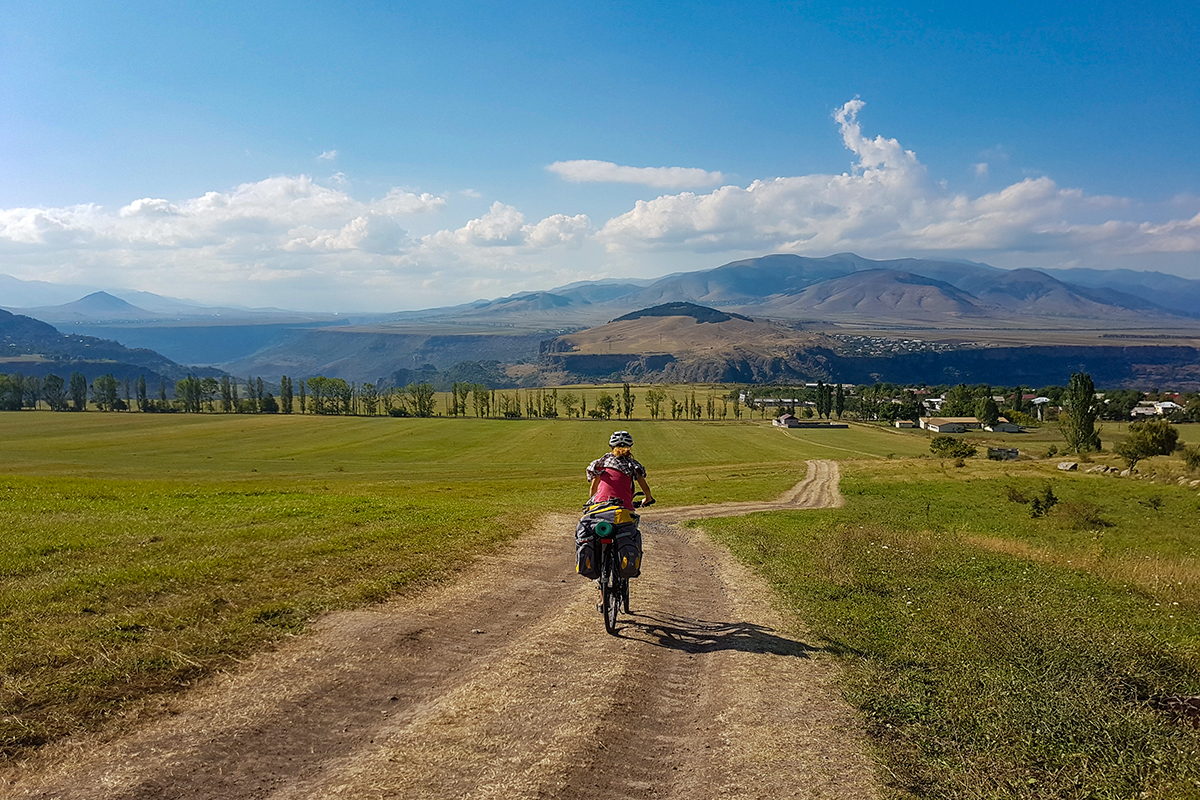

While in Dsegh, we were looking at the villages on the plateau across the canyon, wondering what’s there on the other side. From different people in the village, we learned of a newly built cycling route from the village of Dzoragyugh to the medieval monastery of Hnevank, located in the canyon of Dzoraget river, one of Debed river’s tributaries. “A cycling route?! That’s interesting! We should check it out” we said. And so it was decided, and now we had a new route: Dzoragyugh village – Hnevank monastery – Tsits Kar natural monument – Arevatsag village – Odzun village. Oh, how were we to know that… Well, here’s a friendly advice: take this route only if you’re on a mountain bike with no panniers attached. The entire road from the Visitor Center to the village of Arevatsag was nothing but rocks, bumps, holes, and rare remains of Soviet-era pavement here and there. Since our bikes were not suitable for it, we had to walk most of the road, pushing our bicycles forward. It was a tiring experience, one that often made us regret the decision to take this route, but turning back was not an option. Besides, we’ve never been to the 7th-12th-century monastery of Hnevank in the past. Another site we wanted to see was the Tsits Kar natural monument. It gained huge popularity and is often called “Thailand of Armenia” for its resemblance to the limestone mountains in the south of Thailand.
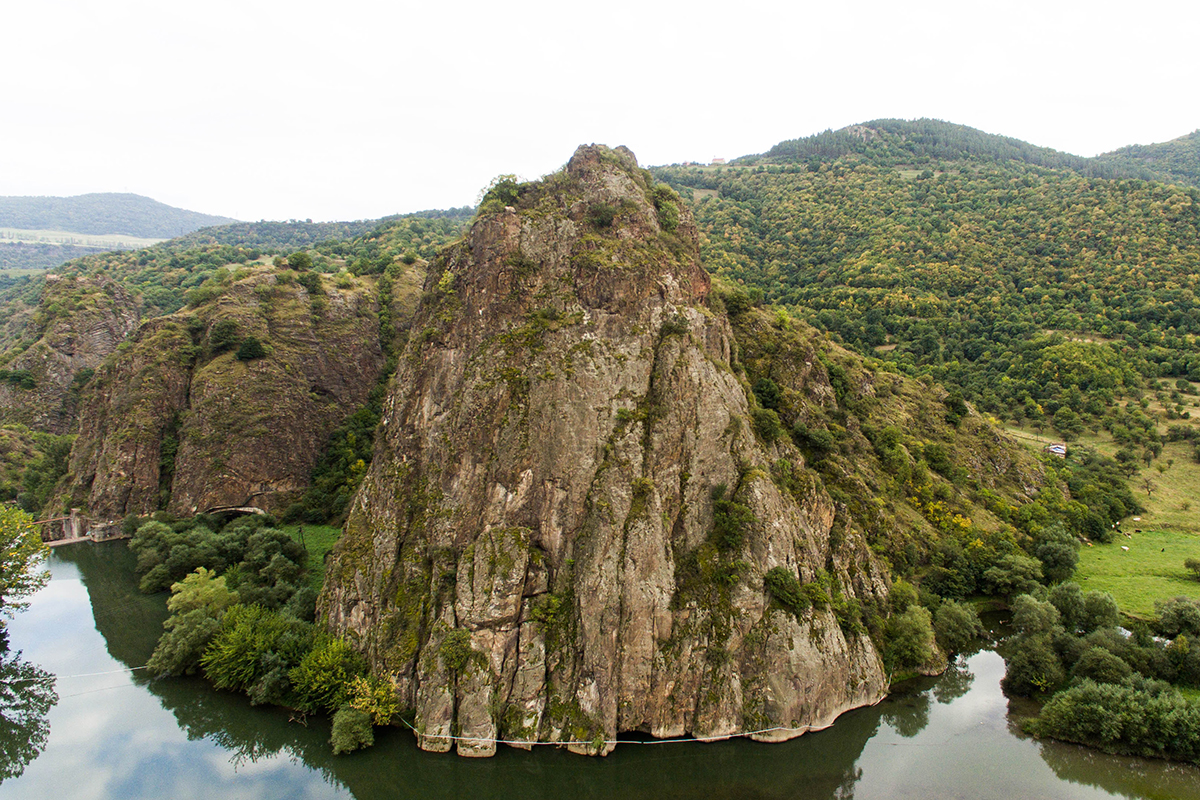

At dusk, the serpentine finally got us out of the gorge and we reached the village of Arevatsag. Cycling from here to the village of Odzun, along the vast fields of corn and tobacco, was a pure delight. We crossed the 10-kilometer distance in the blink of an eye, reaching Odzun just before darkness consumed everything around. We made our way to the B&B Odzun where our hosts, Sergey and Azniv, had already prepared a delicious dinner. We were awarded with a homemade honey vodka, which was the best remedy for exhaustion.
The road from Odzun to the town of Stepanavan is a must-do for every cyclist traveling in Armenia for it is one of the most beautiful roads in Armenia. The breathtaking views of the Debed canyon and the Dzoraget gorge that opened up to our eyes, forced us to often stop and contemplate the beauty that surrounded us.
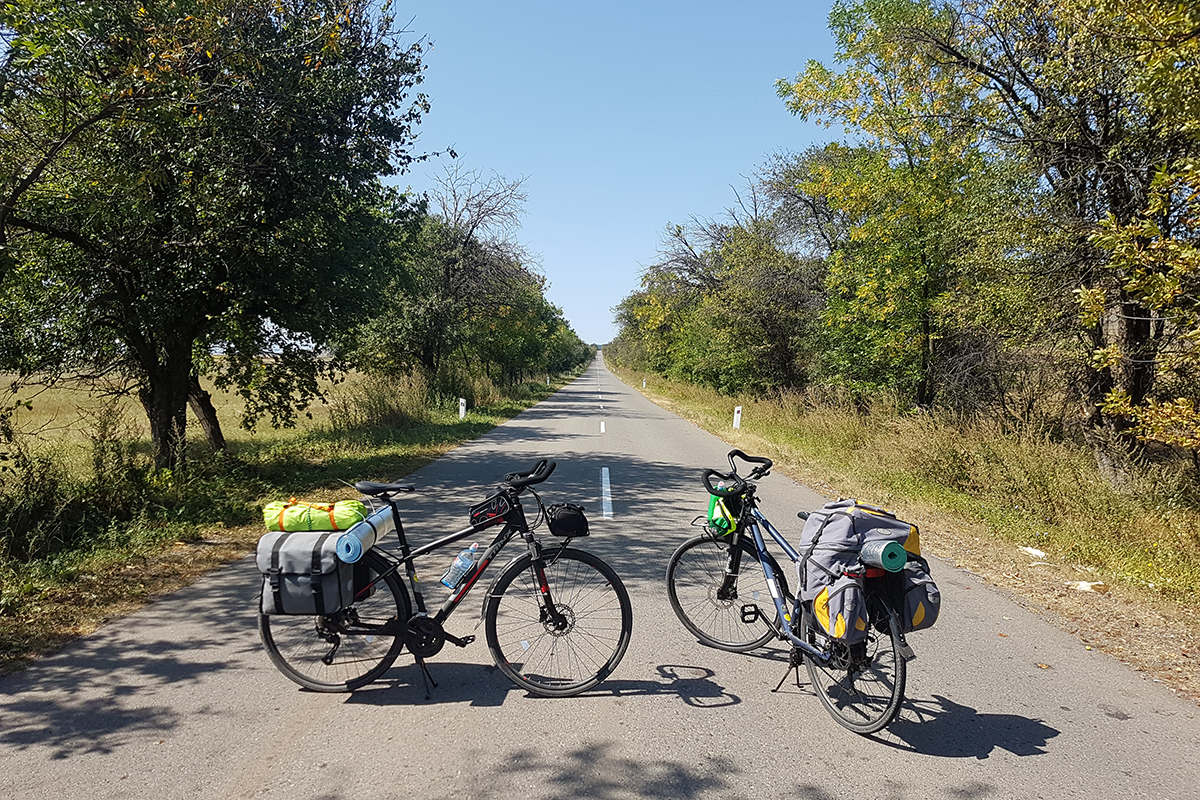

By now we were already used to this Armenian mountainous roller coaster, and cycling wasn’t that challenging anymore. We had another mountain pass to overcome between Stepanavan and Vanadzor where we intended to spend the night. Those who love views of industrial buildings can cycle around Vanadzor, or join one of the tours organized by the Boo Mountain Bike Park project. In the morning of the next day, we visited the Museum of Local Lore of Lori-Pambak and the Vanadzor Fine Arts museum before bidding goodbye to the Debed canyon and taking the road to the town of Dilijan in Tavush province.

